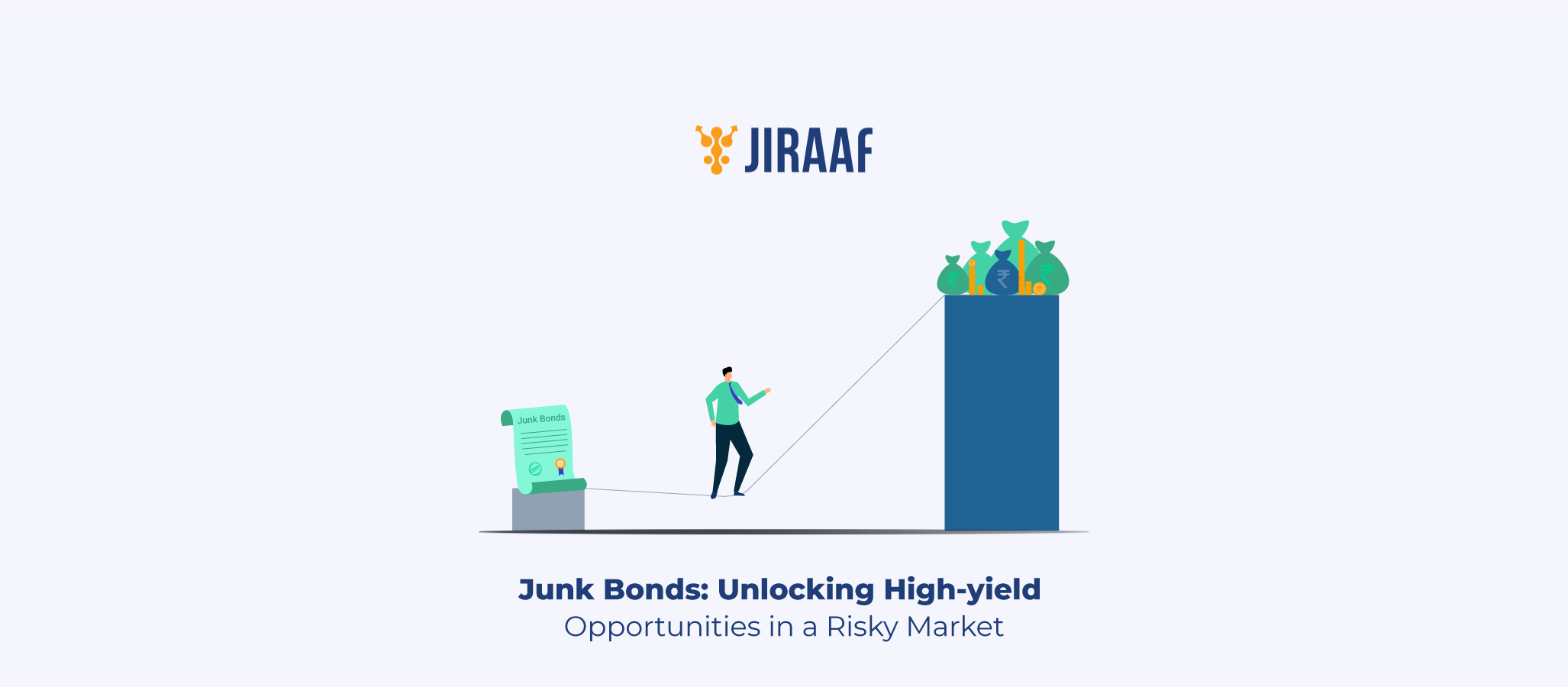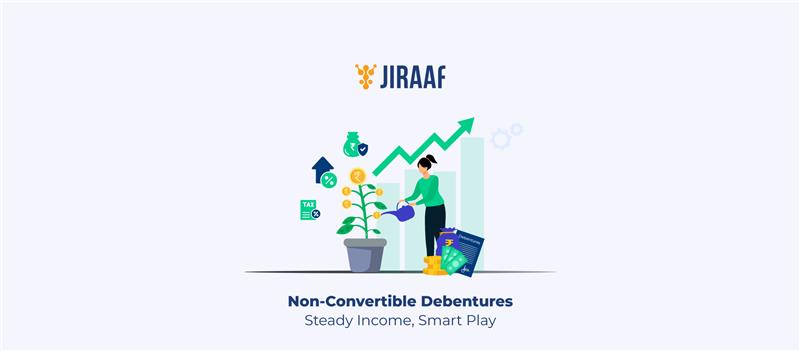For seasoned investors, junk bonds, or high-yield bonds, represent a fascinating intersection of risk and reward. Far from mere speculative instruments, they have carved out a vital niche in global finance by providing essential funding for companies with ambitious growth plans or complex restructuring needs. In fact, the U.S. high-yield bond universe was valued at about $1.2 trillion in 2023, underscoring its pivotal role in modern capital markets.
But why does this matter to you? Junk bonds offer a unique opportunity to enhance portfolio returns while diversifying fixed-income investments. In this blog, we’ll demystify these high-yield instruments, exploring how they function, their advantages, disadvantages, and role in investment strategies. Let’s dive in.
What are Junk Bonds?
Junk bonds are debt securities issued by entities with credit ratings below investment grade. Major rating agencies like S&P, Moody’s, and Fitch typically classify junk bonds as “non-investment-grade”.
These bonds offer higher yields to compensate investors for the elevated risk of default. Their classification stems from the issuer’s financial stability and operational track record, which are deemed less robust than investment-grade entities.
Why are they Called Junk Bonds?
The term “junk bond” emerged during the 1970s and 1980s when high-yield bonds gained prominence as a way for companies with lower credit ratings to access funding. The word “junk” was coined to highlight the speculative nature of these bonds, as they come with a higher probability of default compared to investment-grade securities.
However, the name is somewhat misleading. Junk bonds are not inherently worthless; rather, they reflect a trade-off between higher potential returns and elevated risk. Over time, these bonds have proven their value in certain portfolios, offering opportunities for diversification and enhanced yields. For savvy investors, the term serves as a reminder to approach these instruments with diligence and an eye for strategic potential.
How Junk Bonds Work
In exchange for the money they raise with corporate bonds, the issuers agree to pay regular interest and return the principal at the end of the bond’s term. Investors can purchase these bonds directly from the issuer when offered or on the secondary market. In return, they receive periodic interest payments, with the principal repaid at maturity.
The risk here is that if a company struggles with its finances, it may not be able to meet its repayment obligations. To compensate for this risk, junk bonds offer higher returns (interest rates) than safer investments. Typically, junk bonds are issued by smaller businesses or companies in distress, providing them with a chance to raise capital but also giving investors a potentially higher reward in exchange for taking on more risk.
Examples of Junk Bonds
Several prominent companies have used junk bonds to fuel their growth. Tesla and Netflix are two notable examples of this strategy.
In 2017, Tesla issued $1.8 billion in high-yield bonds to fund the production of its Model 3, a key vehicle in its plan to expand its market share. At the time, Tesla’s financial stability was in question, and its credit rating was low, categorizing these bonds as junk bonds. However, the funds raised through these bonds allowed the company to invest in its manufacturing capacity and infrastructure. This strategic move helped Tesla scale up its operations and eventually turn a profit.
Similarly, Netflix relied on junk bonds to fuel its original content creation strategy. As Netflix sought to compete with traditional media companies and other streaming platforms, it needed significant capital to invest in exclusive shows and movies. With an unproven business model at the time, Netflix turned to the high-yield bond market. By issuing junk bonds, it was able to finance content production that would later help establish its global dominance in the streaming industry.
These cases highlight the pivotal role that junk bonds can play in enabling ambitious business plans and expansions, even though the financial outcomes can vary based on market conditions, execution, and the company’s ability to deliver on its promises.
Investment-grade Bonds vs Junk Bonds
Let’s compare some features of these two types of bonds.
| Feature | Investment-grade Bonds | Junk Bonds |
| Credit Rating | BBB or higher | BB or lower |
| Risk Level | Low to moderate | High |
| Yield | Lower | Higher |
| Liquidity | High | Variable |
| Issuer Stability | Established, financially sound | Potentially unstable |
Junk Bonds as a Market Indicator
The junk bond market can serve as a valuable barometer for overall investor sentiment and economic health. Junk bonds tend to move in correlation with the broader market’s outlook. One of the key indicators you should watch is the credit spread, which refers to the difference in yields between high-yield bonds and safer government bonds, like U.S. Treasuries.
When the credit spread narrows, it typically signals optimism in the capital market. This narrowing suggests that investors are willing to take on more risk, believing the economic outlook is strong and corporate defaults are less likely.
On the other hand, when credit spreads widen, it often points to increased uncertainty or growing concerns about economic stability. Investors demand a higher return to compensate for the increased perceived risk of default, which is usually a sign of a downturn expectation or caution about corporate health.
A sudden shift in junk bond spreads could prompt a portfolio adjustment, especially if it suggests that the economy is heading into more volatile or uncertain times.
Thus, the junk bond market can act as an early warning system, providing clues about future economic conditions before they are fully reflected in mainstream financial indicators.
Advantages of Junk Bonds
Some advantages of junk bonds that investors can enjoy are:
- High Returns: Junk bonds offer significantly higher yields compared to traditional bonds, making them an attractive option for income-focused investors.
- Diversification: Adding junk bonds to your portfolio can help lower overall risk through diversification, as their performance often moves independently of stocks.
- Capital Appreciation: Improved financial performance by issuers can lead to credit rating upgrades, resulting in potential price appreciation for junk bondholders.
Disadvantages of Junk Bonds
Some disadvantages you might need to take into consideration while investing in junk bonds are:
- Default Risk: Default risk is the primary concern with junk bonds, as issuers may fail to repay interest or principal, especially during economic downturns.
- Liquidity Challenges: Due to limited market liquidity, selling junk bonds during financial stress may become difficult.
- Diversification Risk: Investing in junk bond mutual funds or ETFs can mitigate individual issuer risk, but they come with management fees that impact overall returns for investors.
Should You Invest in Junk Bonds?
Junk bonds can appeal to investors willing to accept higher risk in exchange for potentially higher returns. If you have a high tolerance for risk and are comfortable with the possibility of fluctuating returns, junk bonds might align with your investment goals.
These bonds are also suitable for investors who actively manage their portfolios and have the expertise to evaluate the creditworthiness of issuers and market trends. Additionally, they can be a strategic fit for diversification.
Including high-yield bonds in a broader portfolio can help balance risk and return by adding an asset class that performs differently from traditional equities or investment-grade bonds. However, they are generally more appropriate for experienced or institutional investors who can absorb potential losses without jeopardizing their financial stability.
The Bottom Line: Junk (or High-yield) Bonds
Junk bonds remind us that high returns rarely come without challenges. They test an investor’s ability to analyze complex financial environments and manage risk effectively.
Investing in these bonds isn’t just about chasing yields; it’s about understanding the broader implications of risk, credit quality, and market dynamics. A well-thought-out approach, backed by research and clarity of purpose, is essential to harnessing their potential and avoiding potential pitfalls associated with them.
FAQs about Junk Bonds
Why Do Companies Issue Junk Bonds?
Companies issue junk bonds when they lack the credit rating to secure funds through traditional investment-grade bonds. These bonds allow them to raise capital for projects like expansion, restructuring, or operational growth, despite their higher risk profile.
Are Junk Bonds a Good Investment?
Junk bonds can be a good investment for risk-tolerant investors seeking high returns. However, they require careful evaluation of the issuer’s financial health and market conditions to mitigate the risk of default.
What are the Main Risks of Investing in Junk Bonds?
The primary risks include default, where the issuer fails to meet interest or principal payments, and price volatility due to economic shifts or company-specific issues. Liquidity challenges may also arise, especially during market downturns.
Discover fixed income investments with Jiraaf, a SEBI registered online bonds platform that educates and brings access to a wide array of bonds. Sign up today to explore diversified fixed income investment opportunities to support your goal-based wealth creation journey. Start investing!




